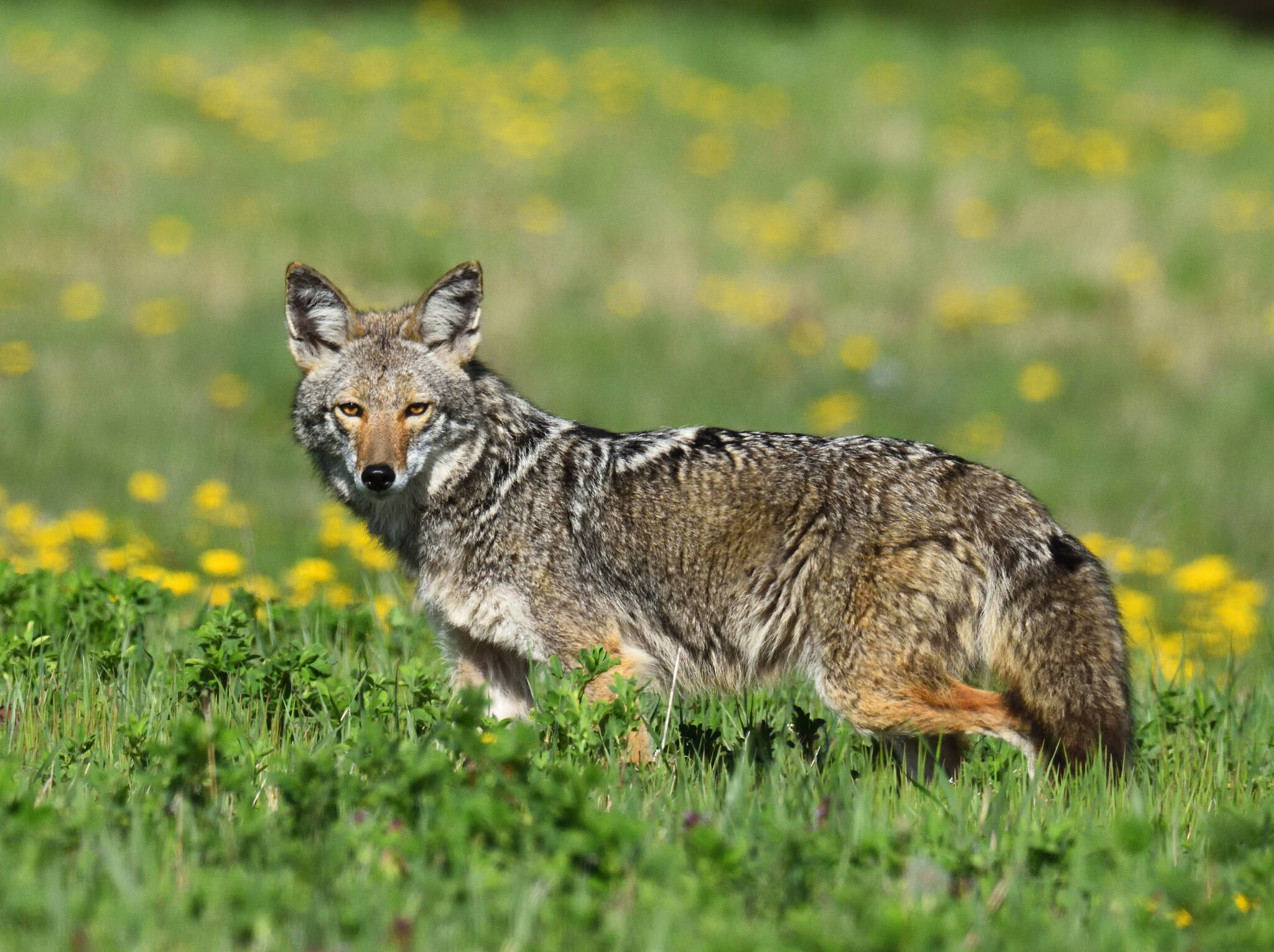With a myriad of missing dog reports, Whidbey residents may think coyotes are to blame.
The lithe, wild canines have often been accused of consuming pets, but in reality, the opportunistic hunters are more likely to go for an easy meal rather than one that puts up a fight.
Ralph Downes, an enforcement officer for the state Department of Fish and Wildlife, said it would be a rarity for a coyote to attack a large dog. When they predate on other animals, it’s likelier that they would go for a cat or small dog, though that’s not the only thing they eat.
A 1997 University of Washington study on scat found that coyotes in Western Washington in residential and mixed forest environments consumed more fruit than mammals, composing 42.6% and 57% of their diets. In a mixed agricultural habitat, though, mammals were the primary food source, at 55%. Of this, 41.7% were voles and 2.3% were cats. Coyotes in residential habitats, however, appeared to consume the highest proportion of cats, with 13.1% comprising their diets. The study did not determine if dogs were a part of a coyote’s diet.
Although Fish and Wildlife is aware of their presence, not much is known about the general coyote population on Whidbey. Due to resource demands of other conservation priorities within the district, coyotes are not a species that has received much monitoring or research.
Downes noted that 2024 appeared to be a bigger year for the cunning canines, based on the number of sightings on Whidbey. The population seems to be cyclical, going up some years and down others.
Coyotes may be relative newcomers to the island. Some old-timers Downes has talked to reported not seeing any until the 1980s.
“I’ve never confirmed that, but obviously historically Whidbey Island was absent of coyotes but had a decent red fox population,” Downes said.
As numbers of coyotes increased, the island’s red fox population decreased, a phenomenon that has been recorded in other rural areas. Downes said they hang out in packs, but they tend to hunt more solitarily.
According to Anna Schwabe, a licensed wildlife rehabilitator for Whatcom Humane Society Wildlife Services, coyotes eat everything from plants and berries to bugs and worms to carcasses of fish, mammals and birds, and when they do hunt it is generally for small rodents. A little animal that is young, undefended, injured or debilitated might also be an attractive meal. Unsupervised small dogs, chickens or even feral cats could be vulnerable.
“The key here is that the coyote has to perceive the pet/livestock as fairly easy prey,” Schwabe said.
She warned against feeding the wildlife or leaving out dog food, which can create the expectation of an easy meal. Coyotes can become aggressive if they learn to associate humans with food.
The wild canines tend to have a bad reputation, but it’s not all deserved.
“Coyotes are actually very important for ecosystem health because as scavengers they clean up carcasses, which prevents disease spread, and help move nutrients around by eating a carcass in one location and defecating in another,” Schwabe said. “They will also hunt small mammals that are commonly considered pests to humans, such as mice, rats, voles, moles and rabbits.”
As long as people are not giving them access to learn destructive behaviors, she added, they’re generally good neighbors.
“I think we mostly hear about coyotes causing trouble because those are comparatively uncommon events; we don’t usually hear about coyotes going about their normal behavior because it’s commonplace,” she said.
Reports of coyotes in the city or suburban areas can be sent to community science programs such as Woodland Park Zoo’s Carnivore Spotter map, carnivorespotter.org/urban-carnivore-spotter.
If residents witness a coyote attack on supervised or contained pets or domestic livestock, wildlife violation, or an injured or dangerous animal, they can report it to Fish and Wildlife officers by calling 360–902–2936, emailing WILDCOMM@dfw.wa.gov or by reporting online at wdfw.wa.gov/about/enforcement/report.
In the state of Washington, a small game or big game hunting license is required for coyotes year-round. A firearm restriction in Island County excludes centerfire or rimfire rifles from being used.
“Aside from that, an individual has the ability to protect themselves, their property and their animals from being attacked or injured by a coyote,” Downes said.



